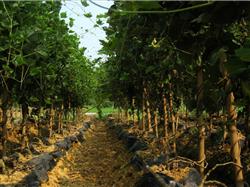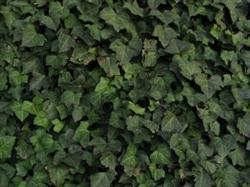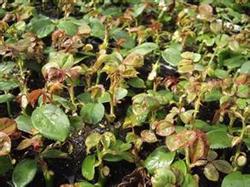High-yield cultivation techniques of Pueraria lobata

Kudzu powder, a mountain plant known as "Asian ginseng" for both medicine and food, is expected to become the sixth largest food crop in the world within five years, and the global demand for kudzu powder will reach 50 million tons per year (nearly 10 million mu of open arable land), experts from the World Food and Agriculture Organization and other authoritative institutions predict. After China's accession to the WTO, domestic and foreign pharmaceutical processing enterprises have a great demand for Chinese green food and agricultural products, because Pueraria powder has the effect of both medicine and food, and it is a treasure of green plants. As the raw material of kudzu powder, the planting area of our country is less than 200000 mu, which is far from meeting the needs of domestic and foreign markets. Domestic and foreign pharmaceutical manufacturers have been the first to develop kudzu powder medicine and health care products, but they have to buy them everywhere because of the shortage of raw materials. At the same time, because kudzu powder has a wide adaptability to soil, it is suitable for planting in mountainous areas, especially for the economic development of poor mountainous areas, farmers get rid of poverty and become rich has practical significance, more environmental significance, the development of kudzu industry is imperative. According to our years of planting experience, to explore a set of high-yield cultivation techniques of Pueraria lobata: first, land selection: requires deep soil layer, easy drainage, ploughing, cultivated land, barren hills, barren slopes, riverside. The embankment, the edge of the field, the corner of the dike, the house in front of the house and the forest cutting site are all suitable for sour soil, suitable for growth temperature of about 28 "C, resistance to low temperature of minus 20" C, and resistance to high temperature of 39 "C. Second, base fertilizer: 100kg of puerarin bio-organic fertilizer per mu and 1000-2000 kg of mature compost (farm manure) are fully mixed and used as base fertilizer and strip fertilizer. three, Soil preparation: remove weeds, plough about 35 cm deep, rake the ground, and then make a border with a ditch depth of 40 cm and a width of about 100 cm. Fourth, planting seedlings: 660-700 seedlings per mu (with roots) or cutting seedlings (including two stem nodes) per mu from 12 to April, according to the plant spacing of 100 cm and row spacing of 100 cm, according to the growth characteristics of Pueraria lobata, the seedlings are planted (inserted) at an oblique angle to the ground, pressing the surrounding soil. Then pour the root water (note: let the buds show the soil surface, the two stems must be one in the soil and the other outside the soil). Fifth, root fertilizer: before planting, soak 1-1.5 kg of compound biological fertilizer per mu for about 2 hours by adding fine soil and water to make a paste, and plant (insert) the roots of the seedlings covered with mud to improve the survival rate. 6. Field management: 1. Apply seedling fertilizer: when the seedlings grow to about 20 cm, (after loosening the soil and weeding) 1 kg of compound biological fertilizer per mu and 200 kg of diluted mature human feces and urine are fully stirred and poured once at intervals of 20 days. increase the concentration and dosage step by step, a total of three times. 2. Spraying bacterial fertilizer (raising seedlings): soak the rattan leaves with 0.5 kg compound biological fertilizer per mu for 2-3 hours, filter and spray on the back of the leaves 4 hours in the afternoon on a cloudy or sunny day. 3. Spraying hole fertilizer: when the stem block is formed, 2550 kg of special biological organic fertilizer per mu is mixed with mature manure and 20 cm away from the root of the plant. 4. Intermediate ploughing and weeding: weeding is needed when the seedlings grow to about 20 centimeters, and after deep ploughing for about 5 centimeters (the formation of stems is not suitable for intermediate ploughing), the crops grow rapidly after raising seedlings, and there is no chance for weeds to grow. 5. Pest control: the occurrence of pests should be killed in time with the biological pesticide avermectin (insecticidal) in the larval stage (chemical pesticides are strictly prohibited). 6. Irrigation: kudzu root is resistant to drought and waterlogging, so it should not be too wet when watering. In case of continuous rainy days, it should be drained and waterlogged in time. 7. Harvest: winter harvest (October-December), soil cracking occurs when the tuber expands, the soil is dug up from the crack to expose the head of the stem, and the stem is taken out directly, and then covered with soil (to avoid damaging the stem during mining).
- Prev

Prevention and Control of main Diseases of Pueraria lobata
It is the dried root of Puerarialobata (willd.) ohwi, also known as Pueraria lobata, Pueraria lobata and Pueraria lobata. The sex is flat, sweet and pungent. It has the functions of relieving muscle fever, invigorating body and relieving thirst, penetrating hair rash and so on. It mainly treats cold and fever, impenetrable rash, gastroenteritis, hypertension and so on. Its flower nature is flat, the taste is sweet, has the solution wine to stop.
- Next

Breeding and cultivation techniques of Rose
The breeding methods of roses: the breeding methods of roses can be divided into sexual breeding and asexual breeding. The main cultivated varieties in production, such as Pingyin double red rose, Fenghua rose and purple rose, all adopt asexual breeding. Asexual breeding includes ramet, root burying, grafting and tender wood cutting, which are most widely used.
Related
- Fuxing push coffee new agricultural production and marketing class: lack of small-scale processing plants
- Jujube rice field leisure farm deep ploughing Yilan for five years to create a space for organic food and play
- Nongyu Farm-A trial of organic papaya for brave women with advanced technology
- Four points for attention in the prevention and control of diseases and insect pests of edible fungi
- How to add nutrient solution to Edible Fungi
- Is there any good way to control edible fungus mites?
- Open Inoculation Technology of Edible Fungi
- Is there any clever way to use fertilizer for edible fungus in winter?
- What agents are used to kill the pathogens of edible fungi in the mushroom shed?
- Rapid drying of Edible Fungi

